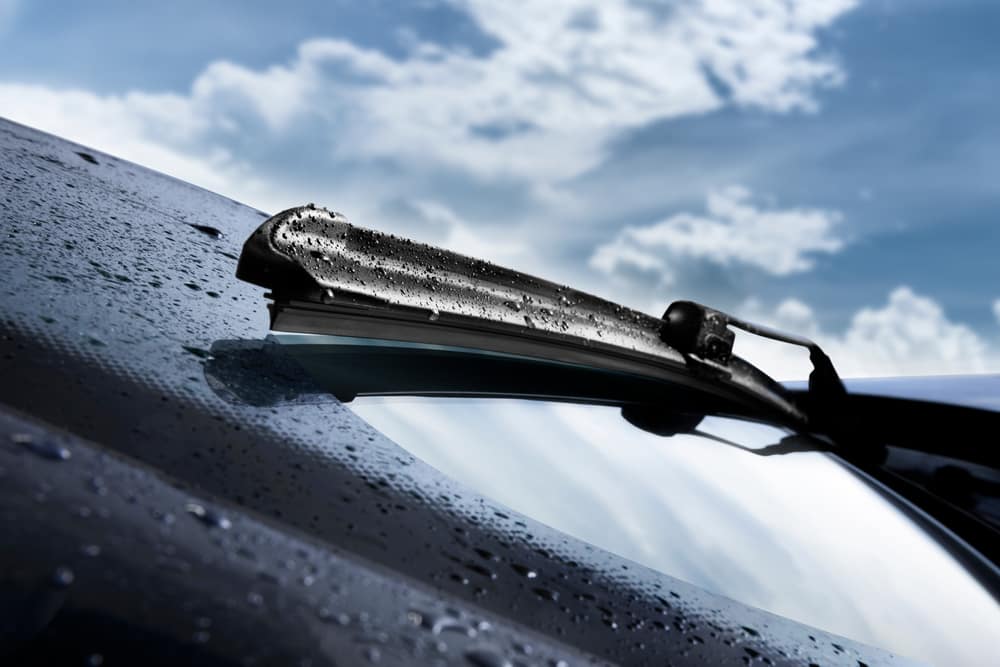When weather turns oppressive, visibility becomes your most valuable safety system. In heavy rain, sleet, and blowing snow, poor wipers smear water, leave streaks, and chatter across the windshield. The best blades for harsh conditions maintain even pressure, shed ice quickly, and use a rubber compound that stays flexible in cold temperatures. Choosing wisely reduces eye strain, shortens reaction time, and can genuinely prevent fender-benders on stormy commutes. For drivers looking to keep their vision clear during such weather, visiting a trusted Car wiper Blades Repair Shop Dubai can ensure professional installation and timely maintenance.
Blade Types Explained
Most modern blades fall into three categories. Conventional blades use a metal frame with multiple pressure points. They are inexpensive and work well in mild climates, but exposed joints can pack with snow and ice. Beam blades use a single curved spine that applies continuous pressure across the glass. Their low-profile shape resists wind lift at highway speed and sheds slush better than framed blades. Hybrid blades combine a protective shell with an internal frame, aiming to deliver beam-like contact while keeping costs moderate. For heavy rain and snow, beam or hybrid designs are usually the smartest pick.
Rubber Compounds and Coatings
Rubber isn’t just rubber. Natural rubber grips well but can harden in the cold and degrade under sunlight. Graphite-coated natural rubber glides more quietly. Silicone rubber resists UV, stays supple in low temperatures, and can last significantly longer. Some blades infuse PTFE or apply hydrophobic treatments that help water bead and roll off the glass. In winter, prioritize compounds rated for sub-zero flexibility; in monsoon-style rain, look for coatings that reduce chatter and improve sweep smoothness.
Frame and Spine Construction
Harsh weather reveals weak points. A stainless steel or high-grade polymer spine resists corrosion and maintains shape under ice load. Enclosed joints and a rubber boot prevent freezing between moving parts. Multiple pressure nodes ensure consistent contact, particularly on the curves common in newer windshields. If your vehicle parks outside, a protective shell that blocks ice from lodging between pivots is invaluable. The goal is consistent, squeak-free contact from the inner sweep near the mirror to the outer edge.
Winter-Specific Features
Dedicated winter blades add a full rubber shroud over the frame, keeping snow and road salt out of moving parts. Some include an extra-stiff edge to push heavy slush. Low-temperature silicone, flexible spoilers, and quick-release adapters you can operate with gloves also help. If your vehicle has a heated wiper park area, confirm that the blade’s materials tolerate localized heat without warping. In freezing rain, a beam blade with an integrated boot often outperforms a conventional frame–especially when ice forms on the metal.
Size, Fit, and Adapter Systems
The wrong size undermines even the best materials. Check your owner’s manual or measure your existing blades; left and right dimensions can differ. Many premium blades include multi-adapter kits for pinch-tab, hook, or bayonet arms, but not all adapters fit equally well. A sloppy fit causes lift and chatter. After installation, run the wipers dry for a moment to confirm smooth tracking without wobble. If you hear clicking at the arm, the adapter likely needs reseating or replacement before risking poor contact.
Aerodynamics and Noise Control
At highway speeds, wind can peel a blade off the glass. Beam blades fight this with integrated spoilers that press the edge down as speed rises. A continuous curved spine distributes force evenly, reducing flutter and noise. In monsoon-like rain, this aerodynamic grip lets you run the wipers at moderate speed instead of max, which reduces wear and improves visibility. If you drive behind trucks that kick up spray, choose blades advertised for high-speed downforce and splash resistance.
Installation and Maintenance Tips
Even the best blade fails without care. Clean the windshield with quality glass cleaner and a clay-type towel a few times per year to remove film that causes chatter. Wipe the blade edge with isopropyl alcohol monthly. In colder climates, lift wipers the night before a storm to avoid freezing to the glass. Never use blades to scrape ice—use a proper scraper and de-icer instead. Replace blades every six to twelve months depending on driving conditions, or sooner if you notice streaking, skipping, or frayed edges.
Budget vs. Premium Blades
Premium blades cost more because they utilize advanced rubber compounds, sturdier spines, and aerodynamic spoilers. They often last significantly longer—especially silicone models. Budget blades might serve you well in short, mild winters, but they degrade quickly in true snow-belt conditions. Daily drivers in harsh weather find that the cost per month of premium blades is often lower, due to longer life and better performance during storms.
Quick Recommendations by Weather Scenario
- Heavy rain at high speeds: Opt for beam blades with robust spoilers and graphite or PTFE coatings for quiet, streak-free performance.
- Wet snow and slush: Look for hybrid or winter-rated beam blades with an enclosed boot to prevent ice buildup.
- Extreme cold: Silicone winter blades that stay flexible below freezing are ideal and resist becoming brittle.
- Occasional storms in temperate zones: A mid-tier hybrid blade offers a balanced blend of affordability and resilience.
Common Myths to Ignore
“Bigger is better” is false—oversized blades lift at the tips and fail to reach corners. “Silicone never wears out” is also incorrect; while more durable, it still ages. “Rain-repellent treatments make wipers unnecessary” disregards night driving and splash conditions at lower speeds, where blades remain vital. Finally, “all adapters are equal” is misleading—poor adapters cause vibration, noise, and poor wipe contact.
Final Checklist Before You Buy
- Confirm exact blade sizes for both front wipers and any rear one.
- Prefer beam or hybrid designs for survival in harsh weather.
- Choose low-temperature-rated rubber or silicone with a slick coating.
- Opt for a corrosion-resistant spine and protective enclosure or boot.
- Ensure the adapter matches your vehicle’s arm style securely.
- Plan maintenance: regular glass cleaning, alcohol-wiping the edges, lift wipers before freezing events.
When you follow this checklist, you’ll get blades that cut through downpours, shrug off sleet, and keep your view clear all season long.



